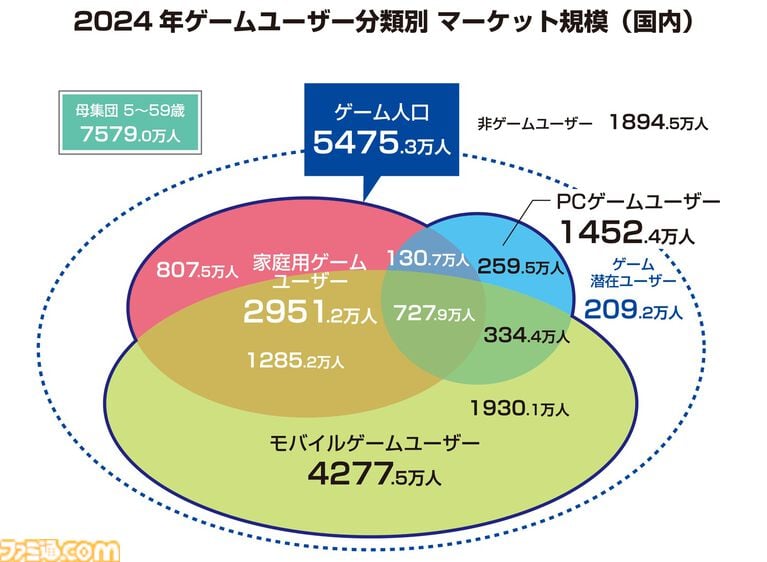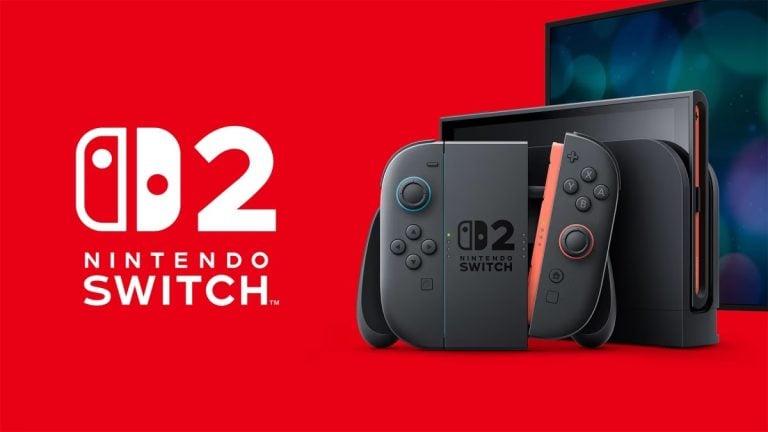Famitsu recently published a preview of the 2025 edition of the Famitsu Game Hakusho – a yearly publication by Kadokawa ASCII Research Laboratories that compiles data on the Japanese and global game industry. The 2025 edition indicates that Japan’s PC gaming population is smaller today than it was ten years ago, although the most recent year saw a slight rebound.
According to Famitsu Game Hakusho 2025, the Japanese game market grew by 3.4% between 2023 and 2024, reaching an estimated 2,396 billion yen (over $16 billion USD). The domestic gamer population (console, PC and mobile gamers aged between 5 and 59) counted an estimated 54.7 million people – a slight decrease compared to the previous year’s 55.5 million.
A breakdown by platform shows that the majority of Japanese gamers were mobile users (42.77 million people), followed by console users (29.51 million) and lastly, PC users (14.52 million). These figures are not mutually exclusive, as many users play on more than one platform.
While the number of active PC gamers increased slightly in 2024 compared to the previous year’s 14.45 million, this remains well below figures from 2015. As annual figures from the Famitsu Game Hakusho 2015 indicate, console and mobile gamers in Japan have increased in the past ten years (26.12 million → 29.51 million; 14.11 million → 42.77 million people respectively), while PC gamers have decreased by 3 million (17.49 million →14.52 million).

While there have been fluctuations in between, no year succeeding 2015 saw the PC population exceed 17.49 million again (for the record, the figure in 2014 was even higher at 20.37 million). The reasons for this long-term shift are not clear-cut. While PC gaming’s visibility in Japan has undoubtedly grown through the rise of Steam, other factors, such as the popularity of mobile gaming, may be influencing player preferences.
Hardware pricing could also play a role, though the timing does not align perfectly with the decade-long decline. As reported by The Nikkei in June 2025, prices of pre-built desktop PCs in Japan have risen by 40% in the past six years, while some individual PC components have more than tripled in price over the same period.
Moreover, as reported by Yomiuri Shimbun, Japan Electronics and Information Technology Industries Association (JEITA) announced in January 2024 that the number of domestic PC shipments throughout 2023 was 6.667 million units, a 2.9% decrease compared to the previous year. This was the third consecutive year of declining PC sales, and the lowest figure since 2007 (when JEITA started recording data). It is worth noting that 2024 saw a spike in PC sales (8.3 million units), but JEITA considers this to be a result of companies and government agencies replacing PCs ahead of the scheduled end of support for Windows 10 this year. On the other hand, the organization predicted that, with components growing more sophisticated, PC prices are unlikely to fall, which means they will continue to be far more inaccessible to Japanese gamers compared to modern-gen consoles.






It’s not that surprising. PC gaming worldwide is dominated by gachas and F2P games that are also available on mobile, and a large number of people are going to choose to play on their omnipresent mobile device instead of getting a PC.
No kidding, the PC community has always been bad. Now the PC component market is heavily inflated here in Japan. About 400,000 JPY for the cheapest 5090, 85,000 JPY for a 9800X3D, Not even to mention a compatible board and memory.
If you think about the minimum wage of new graduates starting in big companies (ie ours, I’m in management) , it’s less than 4,000,000 JPY a year including twice a year bonus. Mid careers ain’t much better like 7,000,000 JPY. For the last 4 years importing felt like the middleman always added +30% on top of the market price. I was lucky to have a watercooled 4090 MSI for 330,000 JPY (while being scammed by a Chinese seller on Amazon but luckily got compensated) while it was 400,000 JPY at the time.
I wish I could afford a watercooled 5090, but I can’t. Thanks inflation + weak currency.